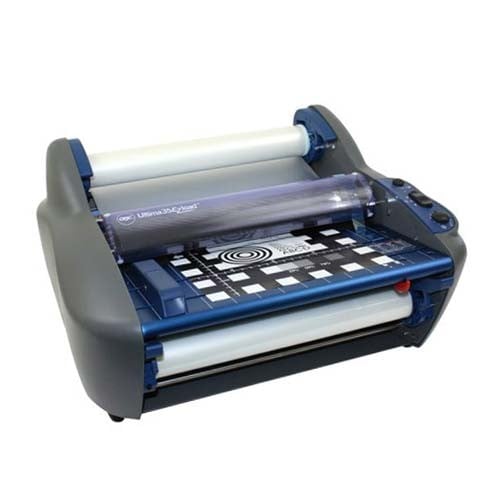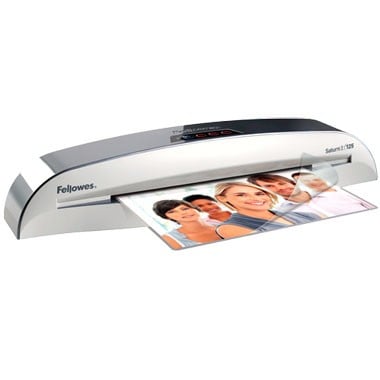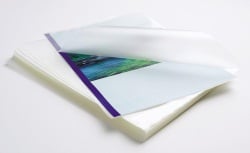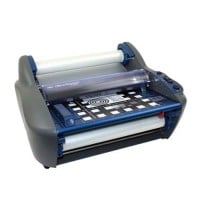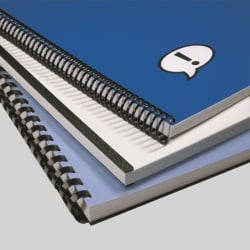MyBinding Knowledge Base
- Binding (248 Article)
- General Binding (42)
- Plastic Comb Binding (57)
- Fastback Binding (59)
- Perfect Binding (2)
- Modular Punching (8)
- Zipbind (3)
- Twin Loop Wire (13)
- Coil Binding (22)
- Thermal Binding (14)
- Strip Binding (1)
- VeloBind (4)
- Binding Covers (14)
- Proclick Binding (10)
- SureBind (4)
- Screw Post (2)
- Hole Punches (2)
- Staplers (4)
- Komtrak Insprial Binding (2)
- Paper (1)
- Rhin-O-Tuff (5)
- Binding Machines Comparison (17)
- Laminating (109 Article)
- General Laminating (26)
- Roll Lamination (16)
- Pouch Lamination (36)
- Pouch Board Laminator (3)
- School Laminator (3)
- Foil Laminating (3)
- Royal Sovereign Laminators (10)
- Laminators Comparison (3)
- Boards (11 Article)
- Bulletin Boards (3)
- Whiteboards (5)
- Chalkboards (1)
- Paper Shredders (44 Article)
- General Shredding (35)
- Industrial Shredders (1)
- Cross-Cut Shredders (2)
- Cardboard Shredders (1)
- Multimedia Shredders (1)
- Personal Shredders (1)
- High Security Shredders (2)
- Ring Binders (9 Article)
- Specialty Binders (2)
- Reinforced Paper (1)
- Health Care Punched Paper (1)
- Perforated Paper (2)
- View Binders (1)
- Index Tabs (9 Article)
- Index Tab Dividers (2)
- Copier Tabs (4)
- Pocket Folders (1)
- Custom Index Tabs (1)
- Pre-Printed Index Tabs (1)
- Paper Handling (37 Article)
- Paper Folders (9)
- Paper Joggers (2)
- Guillotine Cutters (4)
- Rotary Trimmer (3)
- Electronic Paper Cutters (1)
- Corner Rounders (2)
- Paper Scoring (2)
- Paper Drill (2)
- Booklet Makers (3)
- Stack Cutters (1)
- Paper Handling Equipment Comparison (5)
- ID Accessories (12 Article)
- Badge Holder (1)
- Lanyards (8)
- Badge Reels (1)
receive
$5off
*On order $25 or more.
What Pitch Do I need for Coil Binding?
In the article conveniently titled: “What Does Pitch Mean?” we describe in full detail what pitch means. For a quick reminder: the pitch refers to the number of holes per inch. If you go to our spiral coil page you’ll see that there are 7 pitch sizes. Most of those are specialty; if you’re looking for a machine, almost all the options used in the USA are 4:1 machines. So, if you have a coil binding machine you probably don’t have much of a choice--95% chance you will need 4:1 coil.
4:1 coil--two options(43 hole and 44 hole)?
If you’re browsing through machines, you’ll see 4:1(43 hole or .250) and 4:1(44 hole or .248). They use the same coil, so there is no worry there. The difference is only a visual appeal--with 44 hole, the holes come closer to top and bottom edges of the page. This provides a tighter, more full look that some may prefer, but some may like the extra space of 43 hole. In the end, it’s not a huge difference.
3:1 coil used with 3:1 wire binding
If you have a wire binding machine or proclick punch already you don’t need to purchase a coil punch machine. 3:1 coil gives you the availability to use the wire binding punch. The only downside to this is that the holes are square, and not rounded. You also either need to bind it by hand or purchase an inserter. But it is a great option for that special project if you already have another style of binding machine.
2.5:1 coil used with 2:1 wire binding
If you have ever tried to insert coil onto a large document (over one inch) you know just how difficult it can be. Sort of like putting a slinky on the edge of a book. 2.5:1 pitch coil is made of thicker filament (plastic) and is used with a 2:1 or 2.5:1 (only available on specialized large auto punches). The thicker coils and smaller number of holes makes inserting a breeze. Definitely worth a try if you do many large documents and have a 2:1 punch.
5:1 coil
You can find one or two 5:1 machines out there for an even tighter look than the 44 hole 4:1 coil. Again, this is a visual option. It’s NOT more expensive, and it has the same color selection as the very common 4:1. 5:1 coil is sometimes referred to as 5mm and is most common outside the USA.
3.2:1 coil
This is mostly used with industrial coil machines, but can be used with 3:1 wire. It is only available in larger sizes, but it’s made of a harder plastic.
6mm coil
This coil is the equivalent to 4:1 pitch but is mostly sold in European countries. If you have a 6mm machine you can special order this pitch or if you prefer just order standard 4:1 pitch and use that (you will probably save yourself a few dollars).
Turbo Coil
BIG projects? Turbo coil is a thick coil, but it requires specific machines to punch. Like 2.5:1 it is designed for documents larger than 1 inch and is made specifically to make inserting easier. The holes for this pattern are larger and oval shaped to allow pages to turn easier on your document. This is a huge favorite with larger print shops that coil bind big, thick documents.
Our Recommendation?
We recommend going with 4:1 coil. If you need a machine and don’t care if the punch pattern is 44 hole or 43, just choose whichever machine you like the most in your price range.
Key Points:
- Your safest bet--4:1 coil.
- Have a wire binding machine? Try 3:1 or 2.5:1 coil depending on your machine.
Recommended products and other links:
Coil Binding Machines: https://www.mybinding.com/binding/binding-machines/coil-binding.html
Spiral Coil: https://www.mybinding.com/binding/binding-supplies/spiral-coil.html

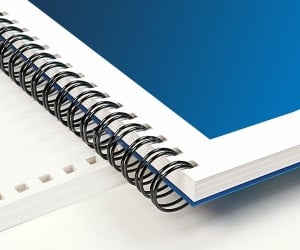
< Over the years, a number of customers have asked me whether they can use twin loop wire with their plastic comb binding machine. These customers often don’t want to have to buy a brand new machine but like the look and feel of twin loop wire binding. However, the answer to their question isn’t as simple as it seems. You see, they actually do make twin loop wire that is designed to work with the plastic comb binding hole pattern. With that said, if you want to use these wires you are going to need a way to close the wires. What is Spiral-O Wire? Let me explain a little bit more…There is a product that we carry called Spiral-O Wire. This wire has 19 loops and is designed to work with the hole pattern from a plastic comb binding machine. Spiral-O Wire is sometimes called Wire Combs or Ibico Wire and was originally designed for use with some of the older Ibico binding machines. A number of the older Ibico plastic comb binding machines also included a twin loop wire closer on the front of them to allow users to use both plastic combs and wire. This 19 loop wire was designed for this purpose. What Equipment is Needed? As the Ibico brand has been phased out by GBC and all of the older Ibico plastic binding machines have been replaced with new models, they no longer have the twin loop wire closer on the front of them. This presents a problem in trying to use these spiral-o wires since you can’t use the wires without a way to close them. One of the only options left is to purchase a Twin Loop wire closer. However, since twin loop wire closers are not incredibly cheap this option usually only appeals to users who have larger electric plastic comb binding machines. Otherwise, it is often advisable to simply buy a low end 3:1 pitch twin loop wire binding machine (the supplies are cheaper). This being said, if you have one of the older Ibico binding machines that has a wire closer included you are in luck. The Spiral-O binding supplies that we carry will work perfectly with your machine and you will be able to use both plastic combs and wire depending on your needs. These Spiral-O binding supplies are available in Black, Silver, White, Blue and Red and in sizes up to 1″ in diameter. If you aren’t sure what type of wire binding supplies that you need to work with your machine simply give us a call. Our trained sales representatives will be glad to help you find the correct supplies for use with your machine.(Read More)
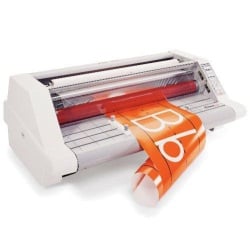

Loading...


